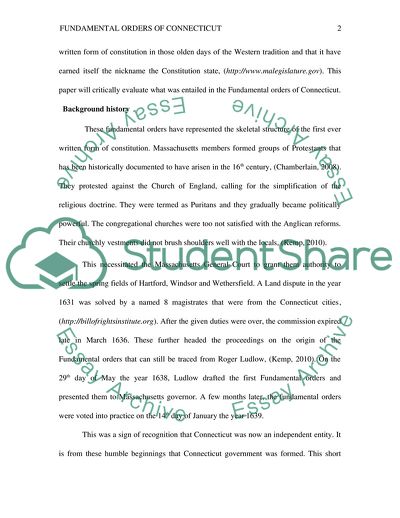Cite this document
(Fundamental Orders of Connecticut Essay Example | Topics and Well Written Essays - 1750 words, n.d.)
Fundamental Orders of Connecticut Essay Example | Topics and Well Written Essays - 1750 words. https://studentshare.org/history/1799877-fundamental-orders-of-connecticut
Fundamental Orders of Connecticut Essay Example | Topics and Well Written Essays - 1750 words. https://studentshare.org/history/1799877-fundamental-orders-of-connecticut
(Fundamental Orders of Connecticut Essay Example | Topics and Well Written Essays - 1750 Words)
Fundamental Orders of Connecticut Essay Example | Topics and Well Written Essays - 1750 Words. https://studentshare.org/history/1799877-fundamental-orders-of-connecticut.
Fundamental Orders of Connecticut Essay Example | Topics and Well Written Essays - 1750 Words. https://studentshare.org/history/1799877-fundamental-orders-of-connecticut.
“Fundamental Orders of Connecticut Essay Example | Topics and Well Written Essays - 1750 Words”. https://studentshare.org/history/1799877-fundamental-orders-of-connecticut.


